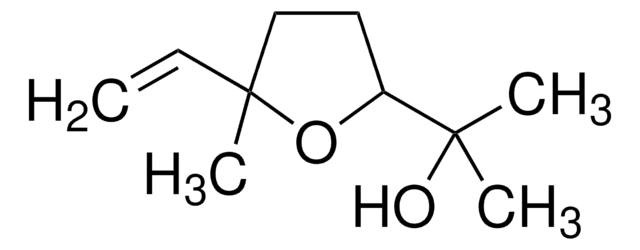W435600
trans-3-Hexen-1-ol
≥95%, stabilized
Sinónimos:
trans-3-Hexenol
About This Item
Productos recomendados
biological source
synthetic
grade
Fragrance grade
Halal
Kosher
agency
follows IFRA guidelines
reg. compliance
EU Regulation 1223/2009
assay
≥95%
contains
alpha-tocopherol, synthetic as stabilizer
refractive index
n20/D 1.439 (lit.)
bp
61-62 °C/12 mmHg (lit.)
density
0.817 g/mL at 25 °C (lit.)
application(s)
flavors and fragrances
documentation
see Safety & Documentation for available documents
food allergen
no known allergens
fragrance allergen
no known allergens
organoleptic
green
SMILES string
[H]\C(CC)=C(\[H])CCO
InChI
1S/C6H12O/c1-2-3-4-5-6-7/h3-4,7H,2,5-6H2,1H3/b4-3+
InChI key
UFLHIIWVXFIJGU-ONEGZZNKSA-N
¿Está buscando productos similares? Visita Guía de comparación de productos
Categorías relacionadas
Disclaimer
signalword
Warning
hcodes
Hazard Classifications
Eye Irrit. 2 - Flam. Liq. 3
Storage Class
3 - Flammable liquids
wgk_germany
WGK 3
flash_point_f
138.2 °F - closed cup
flash_point_c
59 °C - closed cup
ppe
Eyeshields, Gloves, type ABEK (EN14387) respirator filter
Certificados de análisis (COA)
Busque Certificados de análisis (COA) introduciendo el número de lote del producto. Los números de lote se encuentran en la etiqueta del producto después de las palabras «Lot» o «Batch»
¿Ya tiene este producto?
Encuentre la documentación para los productos que ha comprado recientemente en la Biblioteca de documentos.
Nuestro equipo de científicos tiene experiencia en todas las áreas de investigación: Ciencias de la vida, Ciencia de los materiales, Síntesis química, Cromatografía, Analítica y muchas otras.
Póngase en contacto con el Servicio técnico









